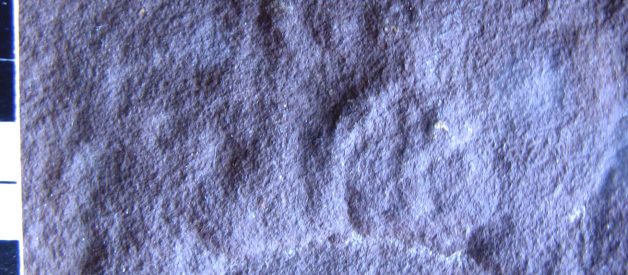 The Mazon Creek fossil Essexella. Scientifically valuable, worth $5?10.
The Mazon Creek fossil Essexella. Scientifically valuable, worth $5?10.
$2.36 million dollars. That?s how much a private seller paid for a nearly complete skeleton of a carnivorous dinosaur sold at auction in Paris. My first reaction was, ?that?s nearly enough money to fund paleontology research in the United States for a year!? My second reaction, one that I share with my colleagues, is that fossils like this belong in a public museum. It may be a new species, but it has never been and may never be formally studied by an expert. As David Polly, President of the Society of Vertebrate Paleontology told Nature, ?Fossil specimens that are sold into private hands are lost to science.? Unfortunately, as reported inNature, this sale is part of a trend for the private sale of fossils, at prices well beyond the means of public museums to match. My final initial reaction is that this sale will provide fresh fire to the long-running dispute between professional paleontologists and commercial collectors, a contretemps that in its current form goes back at least as far back as the controversy surrounding the ownership of Sue the Tyrannosaurus in the 1990?s. Probably nothing in paleontology causes as much dissension among its practitioners as the buying and selling of fossils (rules for collecting on public lands is a close second). That is an issue for another time.
What the sale does is raise the underlying issue of what a fossil, any fossil, is worth. Fossils occupy a peculiar position in our ability to valuate them. On the one hand, they are items of undoubted scientific interest and thus have intrinsic value dependent on their value to science. On the other hand, they are also fundamentally interesting and attractive. Like shells and butterflies, they are collected and displayed as much for their beauty as for their scientific interest. Fossils are purchased much as one would buy a sculpture or a painting, to decorate homes. I have seen large ammonites and slabs of petrified wood made into coffee tables. One company lets you tile your kitchen or bathroom in tiles made from Green River shale, each with a fossil fish in the middle of it. I can understand wanting to own a fossil for its aesthetic value; I have several pieces, mostly ones I?ve collected, on display in my own house.
The real problem comes from the same urge that occurs in every hobby that is based on collecting objects (I speak as a toy train collector). That is the desire to own the rarest or most unusual items. Common stamps, coins, books, or toy trains are not desirable and thus demand a low price, whereas the rare or unique items fetch a premium. And there are bragging rights to fellow aficionados of being the owner of this precious object. Unfortunately, while the value of a rare stamp is really only what someone is willing to pay for it, the rarest natural history objects, such as fossils, are also the ones with the greatest scientific value. I have a box full of the ubiquitous brachiopod Composita, which I give to children for free. It has educational value for the children. I am able to buy for a few dollars, at local flea markets, specimens of the extremely common fossil cnidarian Essexella, which I am currently studying. This fossil has scientific value to me, but not a commercial value because it is common. In contrast, what makes the dinosaur sold in Paris so valuable is not its potential scientific value, or the real cost of excavating and preparing it, but the desire of its new owner (and the competing bidders) to say ?look what I bought!?
Another element of this is the idea, common to every speculative bubble since the tulip mania in 17th century Holland, that the buying and selling of the rare object is also a way to make money. I would not be surprised to see some of the fossils purchased over the past decade make their way back to the auction houses at greatly inflated prices. Regrettably, the best museums and professional paleontologists can hope for is that like the market for Beanie Babies, the cost of the best fossils collapses to a more respectable level.
When I was an undergraduate, I had the opportunity to be a work-study student at the American Museum of Natural History. An integral part of a museum scientists job, I soon learned, was interacting with members of the public; in particular, individuals who had fossils they wanted identified. They all had three questions: ?What is it??, ?How old is it?, and inevitably, ?How much is it worth?? Although we are glad to answer the first two questions, we would not and should not answer the last one. To a paleontologist, the only true worth of a fossil is its scientific value. Let others haggle over price.

